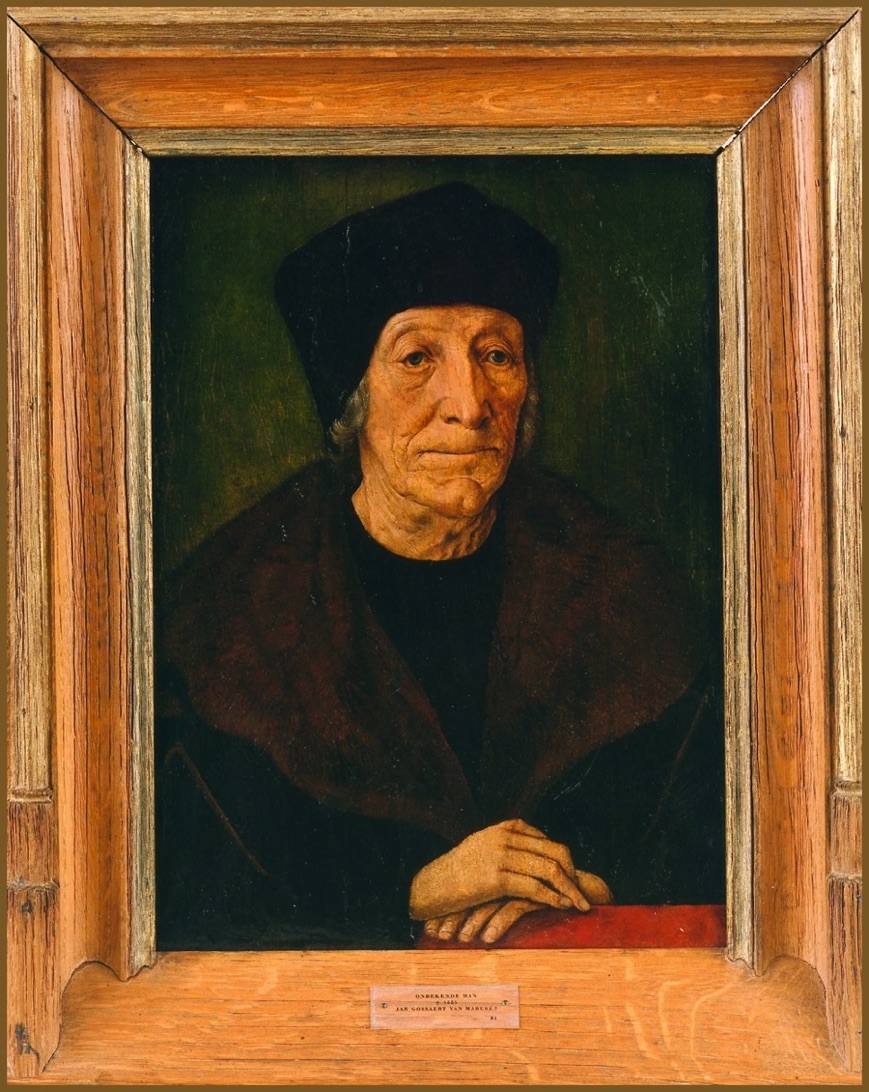Panel
Master of the Southern Low Countries 1525
Painted in the style of Holbein. From the Collection Pourtrates, 1863.
Due to the growing interest in the individual in the Renaissance, a large proportion of commissioned paintings consisted of portraits of citizens. Such people had also been depicted in earlier times, but only as part of larger, mostly religious works. In general, earthly ordinary people were seldom deemed to be so special as to be worth the expensive material needed to base a work of art on them. As the Middle Ages drew to a close this was slowly changing, which can be explained if we look at the rise of a new social class, the class of burghers, or bourgeoisie. This class of city dwellers, consisting of selfconfident and well-organized professionals, was rapidly growing into a powerful economic and social pillar of society, and was one of the main driving forces in the success of Renaissance ideas and technological innovation. The man depicted in this early sixteenth-century portrait indeed gives the impression of a wealthy, self-confident, ageing man whom we cannot identify, due to the absence of inscriptions or documentation.
Paneel
Zuidnederlands meester
Zuid-Nederland
Portret van een onbekende man
1525
Verzameling Pourtrates, 1863, als een Holbein.
Als gevolg van een toenemende interesse in het individu in de Renaissance, bestond een groot deel van de opdrachten aan zestiende-eeuwse kunstenaars uit portretten van burgers. Niet dat men voor die tijd geen gewone stervelingen afbeeldde. Voor hen was op middeleeuwse schilderijen best plaats naast de leden van de heilige familie, maar slechts zelden werd een aards individu zo bijzonder geacht dat hij in zijn eentje een heel paneel en dure verfmaterialen waard was. Tegen het einde van de Middeleeuwen kwam hierin langzaam verandering, een ontwikkeling die gelijke tred hield met de opkomst van een nieuwe sociale klasse: die van de burgers. Deze groep stadsbewoners stond tussen de boeren enerzijds en de adel en de geestelijkheid anderzijds in, en bestond voornamelijk uit rijke kooplieden en handelaren. De man die op dit vroeg zestiende-eeuwse portret staat afgebeeld, ziet er met zijn mooie bontkraag inderdaad niet onbemiddeld uit. Helaas zijn er geen inscripties of attributen die ons in staat stellen de heer met het gegroefde gezicht te identificeren.




